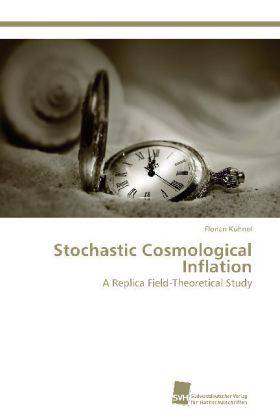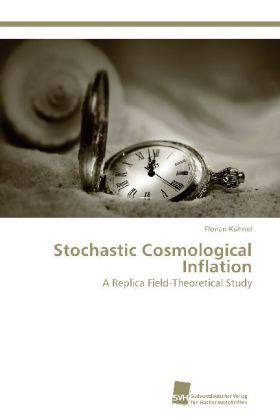
- Afhalen na 1 uur in een winkel met voorraad
- Gratis thuislevering in België vanaf € 30
- Ruim aanbod met 7 miljoen producten
- Afhalen na 1 uur in een winkel met voorraad
- Gratis thuislevering in België vanaf € 30
- Ruim aanbod met 7 miljoen producten
Zoeken
Stochastic Cosmological Inflation
A Replica Field-Theoretical Study
Florian Kühnel
Paperback | Engels
€ 98,45
+ 196 punten
Omschrijving
In this thesis we apply methods from statistical physics to stochastic inflation. Those methods, the replica field theory and the Gaussian variational methods, have to our knowledge never been applied before in this context, and allow us to compute the power spectrum of a scalar test field in the most general set-up. It provides a framework to perform calculations in regions of arbitrarily large quantum fluctuations and may also serve as a starting point to address the issue of back reaction. After an introduction to cosmological inflation, cosmological perturbation theory and cosmic microwave background anisotropies, we explain the idea of stochastic inflation. This is followed by an introduction to replica field theory. Our work continues with a detailed calculation of the power spectrum of a scalar test field in a Friedmann Universe. We elaborate on the effect of quantum fluctuations on the spectrum and derive explicit expressions showing its dependence on time and other important parameters. The effect of self-interactions and possible effects on the cosmic microwave background are discussed. We conclude with a summary of our results and give an outlook.
Specificaties
Betrokkenen
- Auteur(s):
- Uitgeverij:
Inhoud
- Aantal bladzijden:
- 128
- Taal:
- Engels
Eigenschappen
- Productcode (EAN):
- 9783838132501
- Verschijningsdatum:
- 27/08/2012
- Uitvoering:
- Paperback
- Afmetingen:
- 152 mm x 220 mm
- Gewicht:
- 200 g

Alleen bij Standaard Boekhandel
+ 196 punten op je klantenkaart van Standaard Boekhandel
Beoordelingen
We publiceren alleen reviews die voldoen aan de voorwaarden voor reviews. Bekijk onze voorwaarden voor reviews.











